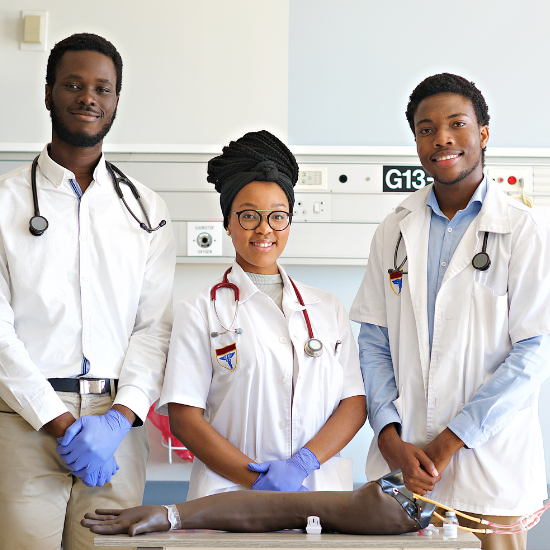Northeast Medical Institute - New Haven Campus Phlebotomy Course & Cna Class for Beginners
Table of ContentsNortheast Medical Institute - New Haven Campus Phlebotomy Course & Cna Class Fundamentals ExplainedRumored Buzz on Northeast Medical Institute - New Haven Campus Phlebotomy Course & Cna ClassNortheast Medical Institute - New Haven Campus Phlebotomy Course & Cna Class - An OverviewSome Known Incorrect Statements About Northeast Medical Institute - New Haven Campus Phlebotomy Course & Cna Class Some Known Factual Statements About Northeast Medical Institute - New Haven Campus Phlebotomy Course & Cna Class Northeast Medical Institute - New Haven Campus Phlebotomy Course & Cna Class Things To Know Before You Get This
The use of such devices should be come with by various other infection avoidance and control methods, and training in their use.For setups with reduced resources, cost is a driving variable in purchase of safety-engineered tools - PCT Classes. Where safety-engineered tools are not readily available, proficient usage of a needle and syringe serves. Accidental exposure and particular information concerning an event ought to be recorded in a register. Support services ought to be promoted for those that go through accidental exposure.
One of the essential pens of quality of care in phlebotomy is the involvement and participation of the patient; this is equally valuable to both the health and wellness worker and the client. Clear information either composed or spoken need to be available per client who goes through phlebotomy. Annex F supplies example message for discussing the blood-sampling treatment to an individual. labelling); transport problems; interpretation of results for professional management. In an outpatient department or facility, supply a committed phlebotomy workstation containing: a tidy surface with two chairs (one for the phlebotomist and the other for the person); a hand laundry container with soap, running water and paper towels; alcohol hand rub. In the blood-sampling area for an outpatient department or clinic, offer a comfortable reclining couch with an arm remainder.
Not known Details About Northeast Medical Institute - New Haven Campus Phlebotomy Course & Cna Class
Ensure that the indicators for blood tasting are clearly specified, either in a created procedure or in recorded instructions (e.g. in a research laboratory type). Gather all the tools required for the procedure and place it within risk-free and very easy reach on a tray or cart, making certain that all the items are plainly noticeable.
Present yourself to the individual, and ask the individual to state their full name. Examine that the research laboratory form matches the person's identification (i.e. match the client's details with the research laboratory form, to make certain exact recognition).
Make the person comfy in a supine placement (if possible). The person has a right to reject a test at any kind of time before the blood tasting, so it is vital to make sure that the client has actually comprehended the procedure - PCT Classes.
The 8-Minute Rule for Northeast Medical Institute - New Haven Campus Phlebotomy Course & Cna Class
Expand the patient's arm and check the antecubital fossa or lower arm. Situate a vein of an excellent dimension that over at this website is noticeable, straight and clear.
DO NOT put the needle where capillaries are drawing away, due to the fact that this increases the chance of a haematoma. The blood vessel ought to be visible without using the tourniquet. Finding the blood vessel will certainly aid in determining the appropriate size of needle. Apply the tourniquet concerning 45 finger widths above the venepuncture website and re-examine the vein.
Haemolysis, contamination and presence of intravenous fluid and medication can all change the outcomes (39. Nursing staff and medical professionals may access main venous lines for samplings complying with protocols. Samplings from central lines lug a risk of contamination or erroneous research laboratory test outcomes. It is acceptable, yet not suitable, to draw blood specimens when very first presenting an in-dwelling venous tool, before connecting the cannula to the intravenous fluids.
Northeast Medical Institute - New Haven Campus Phlebotomy Course & Cna Class for Beginners
Enable the location to completely dry. Failure to permit sufficient get in touch with time enhances the threat of contamination. DO NOT touch the cleaned site; particularly, DO NOT place a finger over the blood vessel to assist the shaft of the subjected needle. It the website is touched, repeat the sanitation. Execute venepuncture as follows.
Ask the patient to develop a fist so the veins are a lot more prominent. Get in the blood vessel quickly at a 30 level angle or much less, and remain to present the needle along the capillary at the easiest angle of access - PCT Courses. Once enough blood has actually been accumulated, release the tourniquet prior to withdrawing the needle
The Northeast Medical Institute - New Haven Campus Phlebotomy Course & Cna Class PDFs
Take out the needle gently and apply gentle pressure to the site with a clean gauze or dry cotton-wool round. Ask the patient to hold the gauze or cotton woollen in position, with the arm extended and raised. Ask the patient NOT to flex the arm, since doing so triggers a haematoma.

The Single Strategy To Use For Northeast Medical Institute - New Haven Campus Phlebotomy Course & Cna Class
Do not press the syringe bettor because additional pressure raises the threat of haemolysis. Where feasible, maintain the tubes in a shelf and relocate the rack towards you. Inject downwards into the appropriate coloured stopper. DO NOT remove the stopper because it will launch the vacuum. If the example tube does not have a rubber stopper, infuse extremely slowly into the tube as decreasing the stress and speed utilized to move the sampling lowers the threat of haemolysis.
:max_bytes(150000):strip_icc()/Primary_Image-b2e24c37575f48279cff673865d3853c.jpg)